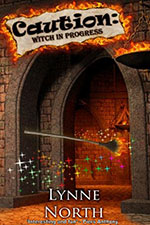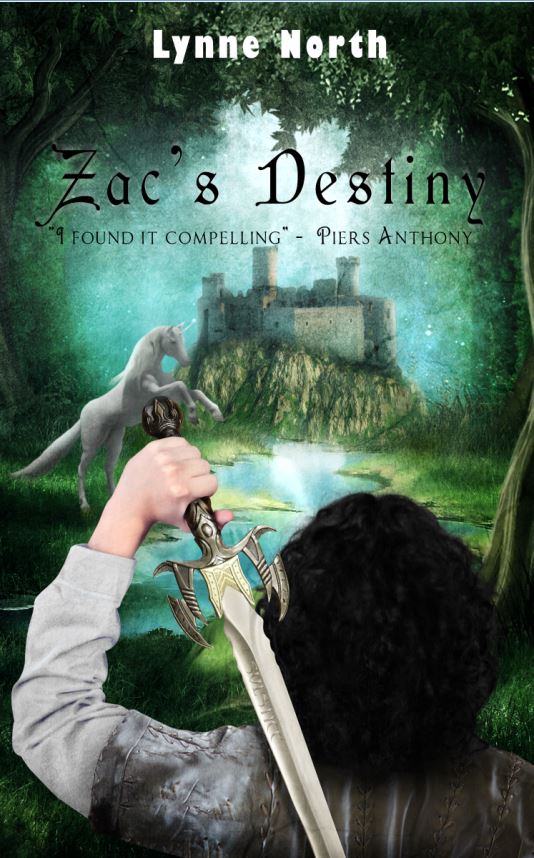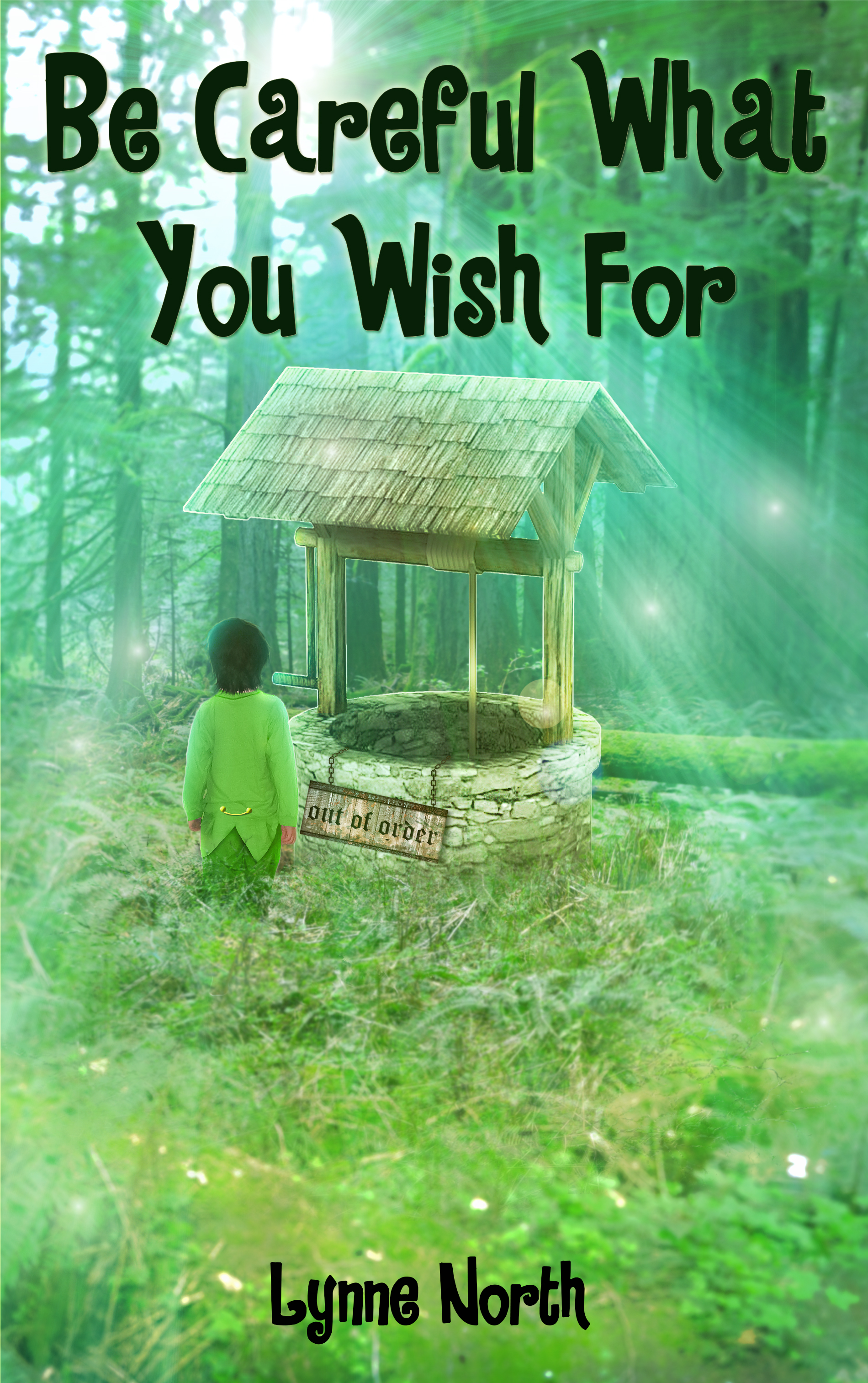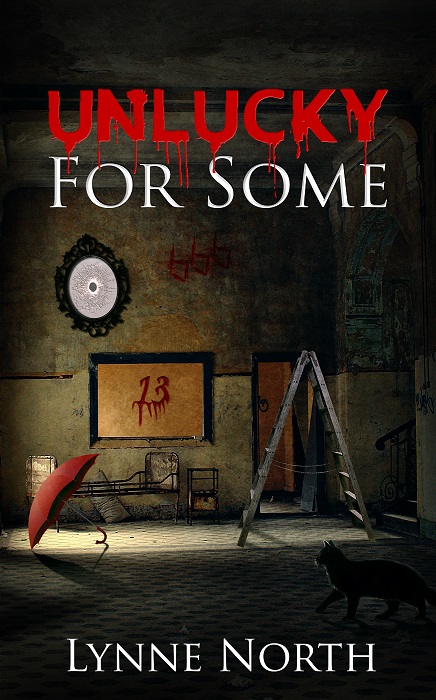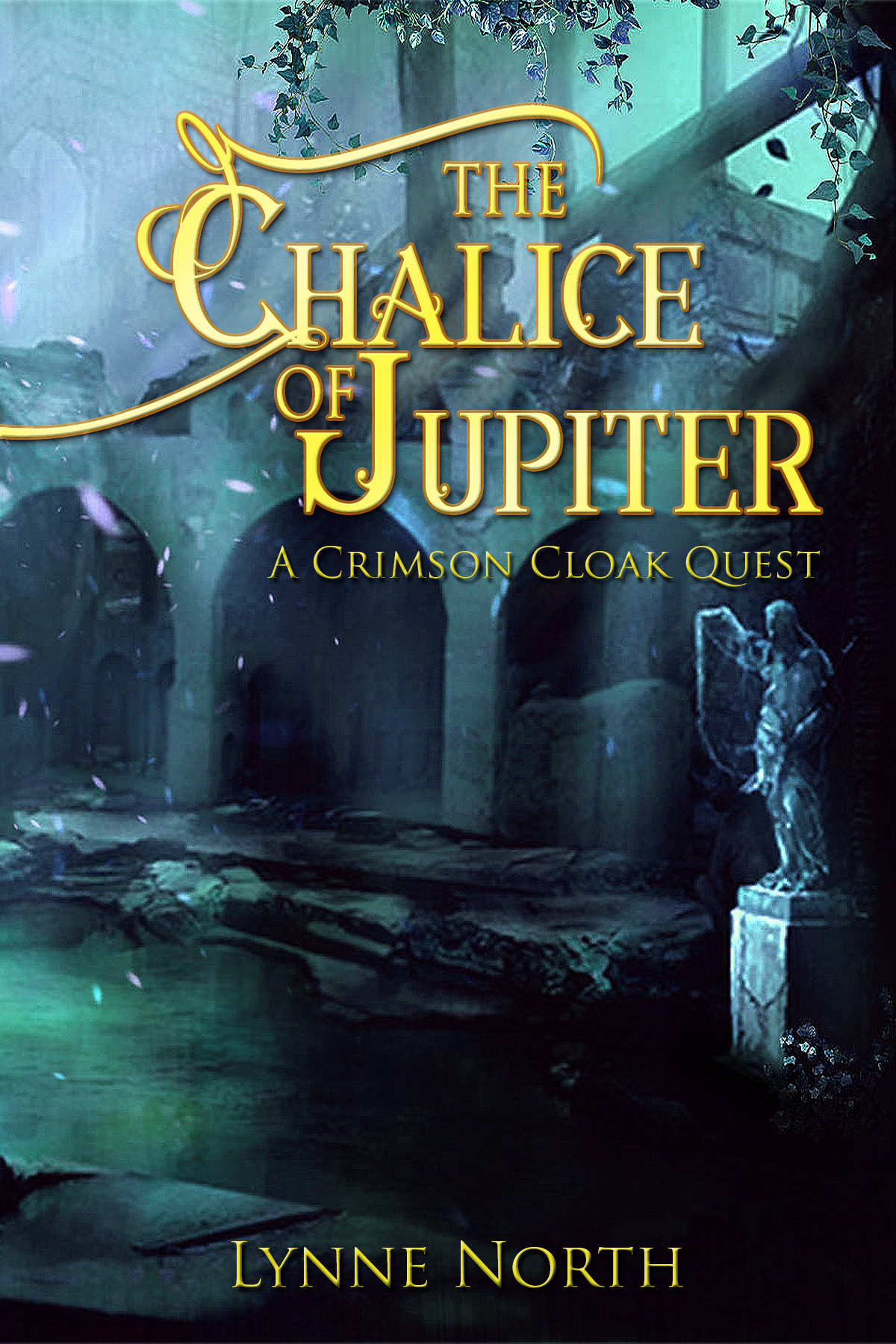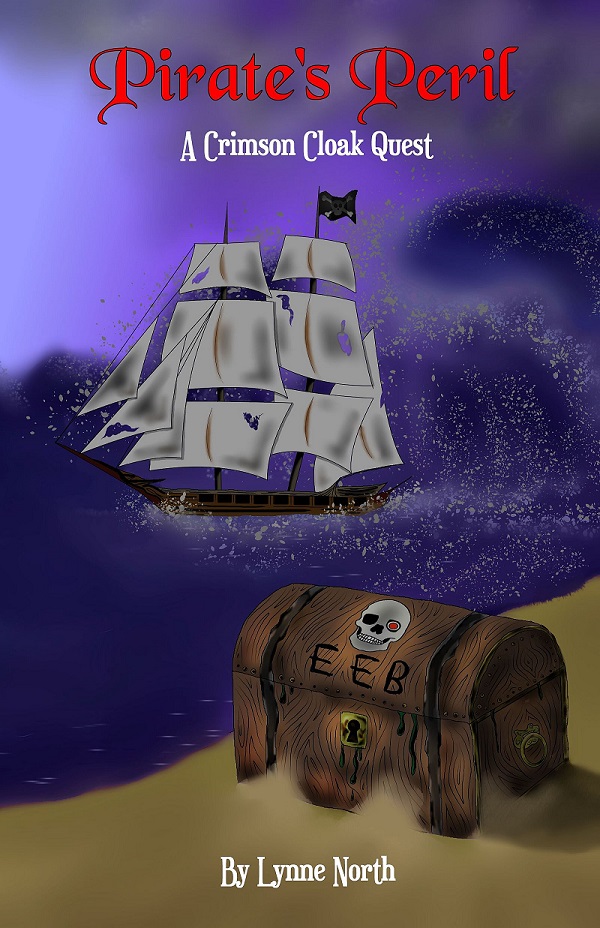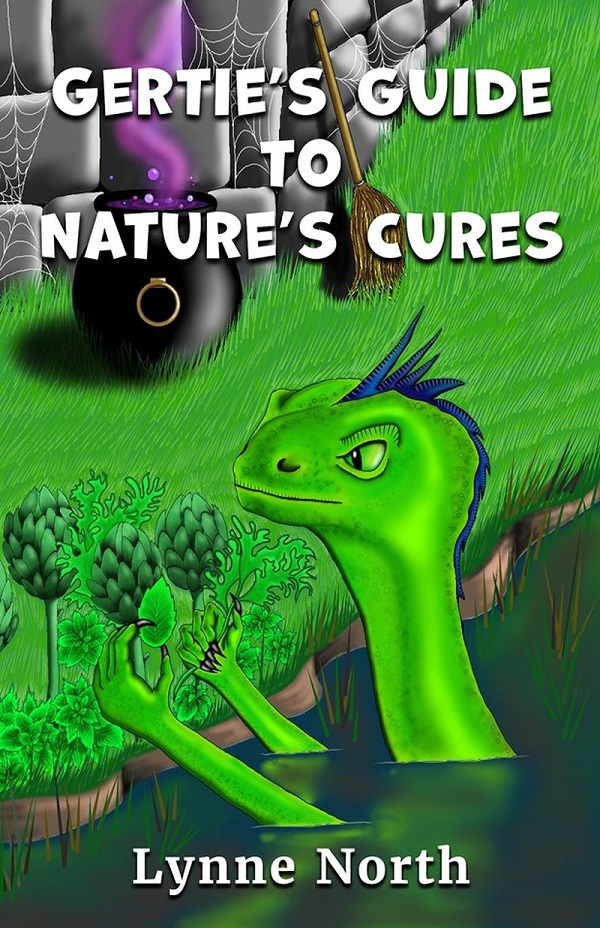lynne
50-Word Stories
A very, very short story published on the 50-Word Stories website!
August 27, 2015 Artistic, Submissions civilization, Lynne North, nature, tree
‘People pass; most don’t notice my existence.
I lived through two world wars, bearing witness to horrors. I harmed no one.
Yet they want me gone.
They come to end my life. I hear the saws, suffer the cuts in my trunk. Soon I will fall.
They call it progress.’
Lynne North writes humorous fantasy novels for children. She decided it was time she tried something else…
The Book Awards Kindle Winner July 2015
New Publisher!
I am delighted to say I have been taken on by a new publisher for my latest children’s humorous fantasy, ‘Be Careful What You Wish For’
”Finn is a bored young leprechaun who lives a quiet life with his family and friends in the sleepy village of Duntappin. He wants something exciting to happen, but never having been blessed by the Good Luck Fairy he soon gets far more than he bargained for. When he least expects his adventure to begin, Finn finds himself a long way from home in dire circumstances. Home begins to seem very appealing all of a sudden. Has he any hope of getting back? This is no fairy tale…
This funny and fast moving story filled by weird and wonderful characters will turn all your expectations on their head, but that’s a good thing, because it makes them all the more amusing’
My new publisher is the American based ‘Crimson Cloak Publishing’ The following extract is taken from their website.
‘Crimson Cloak Publishing was created by people who care about our authors, editors, artists, and customers. For without them, we could not exist.
Crimson Cloak Publishing is a new and exciting voice in the publishing industry. Our main goal is to provide quality literature to our audience at a fair price. We publish soft-covers and e-books, currently. Audiobooks and hard cover will come later.’
Click on the link below to check out the great books for sale!
Free short story for the kids!
The Fiery Sneeze
©Lynne North 2015
‘Go on, then!’ the villagers encouraged, pushing Ned forwards. ‘Go ON.’
With no choice in the matter, Ned shuddered, but did as he was told and edged forwards to the gaping mouth of the cave.
‘C…C…Cedric?’ he all but whispered. There was no reply. ‘He’s not in,’ Ned told the villagers, still using a very quiet voice.
‘Call him properly!’ yelled Tom, the blacksmith.
Ned heard movement from inside the cave, a heavy slithering sound. He turned to make sure he still had the support of his friends. Clearly he didn’t. Tom the strongest man in the village threw himself to the ground to hide behind some rocks, and the rest of the group soon followed. Ned swallowed hard. Before long all that was visible apart from him standing out in the open was a pile of boulders with the odd arm, hand, foot, part of a leg or top of a head sticking out from behind them. Ned began to shake, staring anxiously at the space where his friends had stood a few minutes before. He then stared back at the black hole from which echoed the thump of heavy steps getting ever closer.
Ned considered running, then heard the rumbling deep voice from within the cave.
‘Hello? Is someone there? Who is it? Ah, ahhhhh…’
Ned flattened himself to the ground, his hands covering the back of his head, just in time as the huge, bellowing ‘choooooooooooooo’ rang through the opening with a ball of flames that narrowly missed him.
Ned lifted his head slightly and saw the huge, scaly head appear through the flowers bordering the cave. The fearsome dragon stared down at the young man, his body still shaking from his nostril explosion. Ned remained still, not taking any chances.
‘Oh dear,’ began the dragon in his deep voice, ‘I’m so sorry, but what can I d,d,dooo?’ he bellowed, sending sparks flying over Ned’s head and narrowly missing Tom who had taken that unfortunate moment to peer over the boulders wondering what was happening. Ned saw him duck down again rubbing at the ends of his singed hair.
As the heat passed, Ned lifted his head and looked back at the anguished dragon, standing with a huge paw clasped over his quaking nostrils.
‘We must do something, Cedric.’ Ned muttered from his place on the grass. ‘NO!’ he continued, ‘don’t speak, Cedric. Please just listen.’
‘Mmm,’ mumbled Cedric the dragon through his scaly paw.
‘We’ve always welcomed you living so near to our village. You are a great protector for us,’ Ned continued, ‘but since your sneezing began in Spring our trade has almost stopped. Jack the baker arrived with a wagon full of charred bread after passing your cave. The horses run so fast when they hear you that visitors either leave town before they know they’ve entered it, or arrive head first! Cedric, what can I say?’ Ned asked, rising to his knees now. ‘We can’t go on.’ He spread his hands in a gesture of apology, his face and tone showing the sadness he felt in being chosen the spokesperson of the village.
‘Do you want me to l.l.leave? Ahhh CHOOO’ sneezed the dragon, narrowly missing Ned with a ball of flames as he threw himself flat on the ground again.
Cedric gripped his snout, tears clear in his eyes.
Ned couldn’t bear to say yes. ‘Leave it with me’, he replied. I’ll talk to the others.’
Sliding over to the boulders, still on his stomach just in case Cedric was overcome by another series of sneezes, Ned reached the tight pile of villagers. ‘I can’t do it! Could any of you?’ He stared them all in the eyes, which were about three inches from the ground, one by one. No one spoke up. ‘Right,’ decided Ned. ‘We can’t make him leave, so our only alternative is to cure him.’
‘How?’ asked Sam the stonemason. ‘Cut his head off?’
‘That kind of talk won’t get us anywhere,’ replied Ned. ‘Where’s Meggy?’ he suddenly announced, noticing someone missing from the pile of bodies.
Everyone stared over or around their hiding place in horror. While they had been discussing the dragon, the little girl had slipped out from behind the boulders and ambled over to the dragon! She was now stood singing to herself as she picked flowers from around the mouth of the cave.
‘Meg!’ yelled Ned. ‘Get back here!’ If Cedric sneezed now, anything could happen!
The child returned to them, unaware of the danger and still sniffing her small bunch of red and blue flowers.
Ned began to speak again, but was cut short by a high pitched ‘Atishoo!’
All the village folk buried their heads in the ground, before they realised that the air was not blistered with heat. The sneeze had come from Meggy.
‘Bless you,’ spluttered Ned through a mouthful of earth. He then stared at the flowers, a thought forming in his mind. ‘Wait, yes. That could be it. I’m sure it is…’
The next day Ned stood at his full height before Cedric, staring at the cleared cave mouth. Not a flower was in sight.
‘Thank you, Ned,’ said the dragon. ‘I haven’t sneezed once since the villagers moved all the flowers. I had no idea I had an allergy to them and they were making me sneeze!’
‘Glad to help, Cedric.’ Ned replied with a smile, patting the dragon on his scaly paw. ‘And if you see any more flowers start to grow there, breathe on them with your fiery breath. When no one else is around, of course!’
Interesting facts you might not know about an Eclipse
In England we experienced a partial solar eclipse on Friday 20th March 2015. The last full eclipse occurred in 1999 and the next partial eclipse we see will be in 2026. As a country we knew about it, we were expecting it, and we had been told what would happen. Imagine though what it must have been like to people in olden times to see their sun swallowed whole! Would the sun ever come back? Was the world coming to an end? Clearly many beliefs, fears and superstitions arose. So, we don’t experience the same fears these days, but just how much do we know about the wonder known as an eclipse?
What exactly is a Solar Eclipse?
A solar eclipse is a natural occurrence that we see when a new Moon moves directly between the Earth and our view of the Sun. In this way the Earth, Moon and Sun form a straight line. This is known as an occultation. The Moon’s shadow, divided into the dark umbra and lighter penumbra, can be seen on its journey across the Sun. This is quite a rare occurrence as the Earth, Sun and Moon have to be in perfect alignment. During the eclipse we see the Moon beginning to move across the Sun so that we see less and less of it and the light gradually dims. In a total eclipse this continues to happen until the entire Sun is blocked by the Moon for a few minutes and the sky becomes dark as night. The Moon takes about a month to circle the Earth, but we do not see an eclipse each month because the orbital planes of the Moon around the Sun differ from that of the Earth around the Sun. We will only see a solar eclipse when the Moon is directly in front of the Sun and the orbital planes intersect.
Different types of Eclipse
As we know, an eclipse is an astronomical event that occurs when one celestial body partially or totally covers another celestial object, but there are several kinds of Eclipse:
Total
In a total solar eclipse the Moon completely covers the Sun from our view on Earth dropping us into total darkness. An eclipse of this nature can only be seen from a relatively small area on Earth, one of around a hundred miles wide and about ten thousand miles long. Areas not in this area may be able to see a partial eclipse.
Partial
A partial solar eclipse, as we saw over England this year, occurs when the three celestial bodies do not align in an exact straight line. In this type of eclipse the Moon only partially covers the face of the Sun blocking only a section of it from our view.
Annular
The third kind of solar eclipse is known as an annular eclipse and occurs when the Moon looks smaller than the Sun when it passes across the centre of it. This happens when the Moon’s orbit is further away than usual. In this instance we can still see a bright ring of sunlight, or annulus, around the edges of the passing Moon.
Lunar eclipses
We also get to see lunar eclipses, total, partial and penumbral, when the Earth blocks the Sun’s rays from reaching the Moon. As the Moon does not have its own light it only shines because it reflects the Sun’s rays. Lunar eclipses only happen at Full Moon.
Why so rare?
An eclipse is a rare occurrence and each year only between two and five will occur. For the UK there have only been eight total solar eclipses visible over the last five-hundred years! So, why do we not see a solar eclipse every new Moon? The reason for this lies in the tilt of the Moon’s orbit, approximately five degrees from the ecliptic. This results in the Moon usually travelling either too high or too low to block out the Sun’s light. The fact that we ever see eclipses is only because of a coincidence. The Sun is much bigger than the Moon, but also much further away. In this way they look close to the same size from our viewing point on Earth. We must have a full or new moon when the correct nodes line up, and this only happens on rare occasions. When conditions are favourable the smaller Moon appears to block our Sun giving us the amazing phenomenon known as an eclipse.
Royalty
Throughout our history we have seen many accounts of eclipses being considered omens of evil for our royalty. The ancient Chinese took this so seriously that failure to predict eclipses could lead to the death of the astrologers! They considered eclipses to be linked to the success and health of their Emperors, so to not predict one and be unprepared for it was thought to put their Ruler in grave danger. The Babylonians concurred with this belief and took no chances. They went so far as to use substitute Kings during solar eclipses in order to swerve the ill luck away from their Ruler and perhaps from their astrologer’s heads too! The 1133AD eclipse in England became known as King Henry’s Eclipse as he died shortly afterwards which added to the belief of the ancients. King Richard III hated eclipses too, but for good reason. The death of his wife around 530 years ago coincided with one.
Religion
The Bible uses eclipses, both solar and lunar, in many of its verses. The strange phenomena happening in our heavens are seen to foretell future events. In the Gospels we are told the sky went dark during the crucifixion of Jesus, a sign of bad times to come. The ancient Greeks had similar beliefs, seeing an eclipse as a sign of their God’s anger and foretelling some kind of disaster. In ancient Hindu belief the serpent demons Ketu and Rahu were said to suck away the light of life. Rahu was beheaded by the supreme God Vishnu but his head still flew across the sky to swallow the Sun. The Prophet Muhammad’s son, Ibrahim, died at the time of the eclipse in 632 AD and this was seen as a sign from the Gods to mark his untimely death. Islamic scholars however say that Mohammad confirmed eclipses did not signify the birth or death of anyone. It is still a Hindu belief to bathe during eclipses in order to lead them to salvation from the cycle of life. This rare and unique solar phenomenon – the alignment of sun, moon and earth – is thought to generate curative properties in the holy waters of rivers and ponds.
Myth & Legend
This rare phenomenon has been the subject of many myths and legends from ancient cultures right through to today. The belief tends to lean towards a bad omen, blacking out our world seen as a sign of evil and worrying times to come. This is understandable as having the life giving Sun taken away wouldn’t seem to predict anything fortuitous. Many believed the event signified the end of the world, a foretelling of doom. Various cultures see an eclipse as a time when demons or animals eat the Sun. To the Vikings it was eaten by wolves. In Vietnam the culprit was a giant frog or toad. It has been pointed out that the earliest word for eclipse in Chinese, shih, means “to eat.” On a more positive note, in Ancient Greece, a war was stopped thanks to an eclipse. It was understood by the armies to be a sign of peace. This is one of only a few positive beliefs to come from an eclipse!
Superstition
It is only natural that such an amazing event will have been the source of many superstitions throughout the years, many still paid heed to today. Some modern superstitions tell us that solar eclipses can be harmful to unborn children therefore they advise pregnant women to stay inside during the event. In India food cooked during an eclipse is believed to be at risk of poison so they fast until it is over. In some Asian countries it is still customary to greet eclipses with lots of noise. Banging pots and pans or lighting fireworks is commonly used to scare any potentially evil spirits away. During an eclipse even birds are said to stop singing due to their confusion over whether it is day or night! On a more positive note, in Italy some people say flowers planted during a solar eclipse will grow to be the brightest and most colourful of all.
Special Sights
Baily’s Beads
Near the beginning and end of a total eclipse, the area of the Sun still visible around the passing Moon appears broken up into blobs of light These are known as ‘Baily’s beads’ after the British astronomer Francis Baily (1774-1844). We see them because the edge of the Moon is not smooth, but distorted by gaps in the mountains and valleys allowing light to pass through in only some areas.
Diamond Ring
As Baily’s beads as described above start to disappear, one last bead often remains for a few seconds longer. This final bead has been said to look like a diamond on the shining ring that surrounds the Moon.
The Sun’s chromosphere
Just for a few seconds after the diamond ring effect disappears we can briefly see the Sun’s chromosphere (sphere of colour). This consists of a narrow layer of red glowing tongues of gas flames leaping from the surface of the Sun.
The Sun’s corona
Only during a total eclipse, the Sun’s corona can be seen as a white halo around the black disk of the Moon. The light of the corona is made up of glowing atoms and the sunlight that shines off dust particles.
Shadow bands
For a short period of time on either side of totality, we might see weird bands of moving shadow racing across the ground, along the sides of buildings or across other light–coloured surfaces. These shadow bands are believed to be caused by irregular bending or refraction of the crescent sunlight by the Earth’s atmosphere.
Strange Facts
A total solar eclipse can happen somewhere on the Earth once every 1-2 years.
If the moon is too far away and too small to cover the sun’s ‘disk’ it causes an annular eclipse, leaving a ring of light.
The longest total solar eclipse can last up to 7.5 minutes.
Temperatures can dip by about 3 degrees during a solar eclipse.
The Moon travels at around 2,250 km (1,398 miles) per hour as it moves across the Sun.
The Sun’s diameter is around 400 times larger than the Moon’s; but the Sun is about 400 times further away from the Earth than the Moon – hence the exact overlap.
If any planets are in the sky at the time of a total solar eclipse, they can be seen as points of light.
Almost identical eclipses occur after 18 years and 11 days. This period of 223 synodic months is called a saros.
No more Eclipses?
We are likely to reach a time when we no longer see any total eclipses on earth, but not in any of our short lifetimes! The moon’s orbit tends to widen at a rate of about two centimetres per year moving it slowly further away from the Earth. Because of this movement, eventually the necessary celestial coincidences will no longer form total solar eclipses – in around 500 million years or so. This movement of the Moon is cause by the gravitational pull the Moon has over Earth. This pull, as we know, produces the tides we see in our oceans. Over time our oceans send a slight gravitational force back towards the Moon that results in a push away from the Earth and slows down the rotation of the Earth a little. In this way, in time the Moon will be too far away to cover the full face of the Sun any more.
Eulogy to Sir Terry Pratchett
It is with deep sadness that I heard about the death of my hero, Terry Pratchett, today. Terry has played the lead role in the books I read, and write, for many years. The world of fantasy will never be the same without him. Terry had a style and wit that no one will ever be able to replicate, he was a true genius.
I hope that Terry’s personification of DEATH met him with the love and respect Terry so richly deserves. Terry has moved on from the mortal plane, but will live forever in the hearts and libraries of all his fans.
A great man, and a fantastic author. We will not see his like again. My deepest sympathy goes out to Terry’s wife, Lyn, and to his family and friends.
Enjoy your afterlife, Terry. It is very lucky to have you…
Great children's humorous fantasy on Kindle
Caution: Witch in Progress is a humorous children’s fantasy aimed at the eight years of age to young teen market.
Gertie Grimthorpe comes from a long line of witches and grows up in Vile Vale. This is a village where it is quite natural to see flying broomsticks and animated furniture with a mind of its own. Most of the animations are courtesy of Grothilde, a witch who has eyes that look out at the world in two completely different directions. Vile Vale also boasts a cottage with a doorknocker that yells “GO AWAY!” at uninvited guests. Every home should have one. All in all, Vile Vale is just like any other witchy village.
Unfortunately, Gertie hasn’t really got the hang of witchiness. Being blonde-haired, blue-eyed and free of warts isn’t much of an advantage. She is beautiful and couldn’t be nasty if she tried.
When Gertie reaches the age of seven, Ma decides it is time to begin to teach her a few simple spells. It soon becomes clear that it is not just Gertie’s looks that are a worry. The poor little witch doesn’t have much of a gift for witchcraft at all. Her spells have a nasty habit of going wrong. Her greatest success is animating the wooden bat’s head handle of her umbrella. Unfortunately, ‘Bat’ hates rain, and now he can loudly tell everyone about it. He also tends to insult everyone he meets. He soon gets to spend a lot of time in the back of Gertie’s wardrobe.
Even Gertie’s ‘Familiar’, a short sighted Owl, isn’t much help to her. Unkind people may say that he is actually quite a hindrance.
Nevertheless, Gran insists that Gertie will grow to be very ‘Special’ one day.
By chance, the old witch sees an advert in the paper. It appears that ‘The Academy’, a famous witch’s school, is willing to take on some ‘paying’ students this term. Usually, only the most gifted witches and warlocks get to go there. Gran decides that the money she has put away for a stormy day will be well spent on paying for Gertie to attend The Academy. When Gertie finds out that she is to attend a private academy for magical children, she hopes to find her witchy way in the world. She soon has a best friend in the form of Bertha Bobbit, a big girl, with a matching appetite. Add to that a Moat Monster with a flatulence problem, the weirdest array of witch’s Familiars possible, and a warlock determined to ruin Gertie’s chances of success, and the story unfolds. Join Gertie as she struggles with growing up (and longing to grow her first wart), learning magic and working out how to deal with her grumpy enchanted umbrella.
Not to mention the demon…
First Crystal Pen Publishing Newsletter
Here is the first newsletter for Crystal Pen Publishing, the new publishing name for my Kindle books. Hope you like it! Please give me some feedback about what you would like to see in the next issue!




